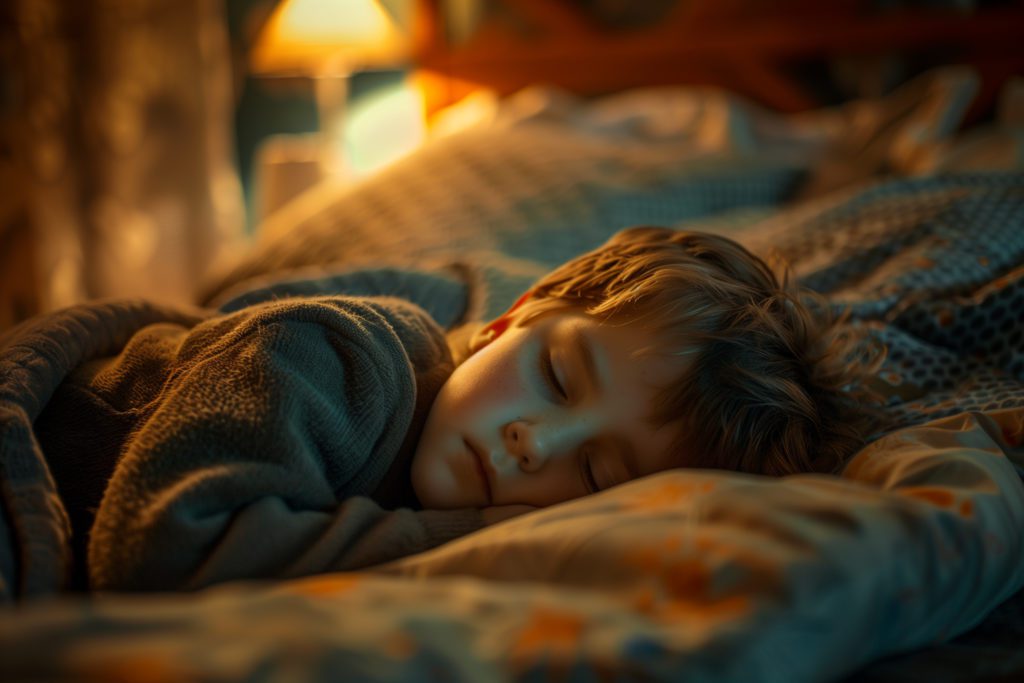
Should Kindergarten Kids Still Take Naps?
Kindergarteners are at an age where daytime naps may start getting dropped. Explore the benefits of offering kindergartners a chance to nap.

The amount of sleep that children need can be confusing to keep track of as they slowly decrease their daytime sleep. Going to kindergarten can be a jarring change for children, as well, especially in regard to whether or not they still need to sleep during this time.
Since sleep needs can vary by child, some kindergartners may need a nap, while others do not. The best thing that parents can do is read their child’s cues to determine if they still need a nap.
What Age Do Kids Stop Napping?
Children see a lot of variability in their sleeping schedules as they progress from equally spaced periods of sleep during the day to more and more nighttime sleep and fewer and shorter naps.
Just between the ages of 3 and 7, children go from napping every day to no longer napping, but the rate at which they drop the nap depends on the kid.
A cohort study found that almost all children still nap at ages three and four, but this is when rates start to go down. By ages five and six, only a minority of kids still nap, and by the age of seven, nearly all kids are done with napping.
Kindergartners are generally between the ages of 5 and 6, placing them in the age range where naps can start to be dropped.
Signs That Your Child Is Ready To Quit Naps
Since the age at which a child is ready to be done with naps can vary by child, it is important for parents to go based on their child’s needs, not their age. Most kids stop napping naturally—they reach a point where they no longer need a nap in order to stay energized all day.
Some signs that your child may be ready to stop taking naps include:
- They are having a hard time falling asleep for a nap. If your child struggles to fall asleep when it is nap time, it may be a sign that they no longer need the nap. Playing or singing while in bed or laying in silence but not falling asleep can indicate that the nap is no longer needed. However, if your child doesn’t fall asleep but is fussy during nap time, the nap may still be needed; the timing just needs to be adjusted.
- They are having a hard time falling asleep at night. Just like a nap can make it hard for you to fall asleep, if your child naps during the day but doesn’t need the nap, it can make it hard for them to fall asleep at night. You can always start by reducing your child’s naptime so that they are sleepy in time for bed. However, it’s better to take away the nap if they can go through the day without it and simply put them to bed earlier rather than keep the nap and push back their bedtime.
- They are not sleepy, even without a nap. If your child doesn’t yawn or struggle to stay awake through naptime and isn’t irritable in the evening, they may be ready to stop taking naps.
- They wake up early in the morning. If your child is starting to wake up much earlier than needed, it may be a sign that they no longer need the nap because they’re getting enough sleep. Consider shortening their nap before cutting the nap entirely.
Do Kindergartners Need Naps?
If your child is in kindergarten, whether or not they have time to take a nap is at the discretion of their school. However, even if children no longer need to nap at this age, they can still benefit from a pause from academic activities, which a designated quiet time can offer them. For those who still benefit from naps, this time can be used to sleep, while those who do not need to nap can use the time to process what they have learned in the morning, rest their minds and bodies, and be ready to listen for the rest of the day.
The Benefits of Napping in Kindergarten
When it comes to napping during the school day, there can be many benefits for children:
Reach Sleep Needs
Children between the ages of 3 to 5 need 10 to 13 hours of sleep every 24 hours. These sleep needs not only include sleep that children get at night but also encompass any sleep that they get from naps. As such, having nap time during the kindergarten day can help children meet their sleep needs.
Boost Academic Performance
Beyond providing children a chance to meet their sleep needs, napping during the day may also boost their academic performance.
Research has found that students perform better at recollection-based learning tasks after a nap because naptime allows a child’s brain to transform short-term memories into long-term memories, aiding information consolidation.
Improve Behaviors
In kindergarten, teachers not only enrich a child’s academic capability but also teach children key life skills such as socializing with others, managing emotions, and following tasks. However, a lack of sleep can make it hard for children to excel.
Consider how you feel if you don’t get enough sleep at night—you’re likely tired and irritable all day, and your mood may only worsen the longer the day goes on as your tiredness grows. If a child needs a nap but is not given an opportunity to nap, their mood may see this same plummet.
By giving children naptime and allowing quiet time for those who do not nap, children can have a moment to recenter themselves, helping to improve their mood and behavior.
Napping in Kindergarten
Kindergarten can see a range of sleep needs, with some kids still needing a daily nap while others no longer need one. In order to address these sleep needs, children should be given quiet time during the day where they can nap, if needed, or spend some time with their thoughts. When the lights turn back on, everyone will feel much more relaxed, rejuvenated, and ready to finish the school day strong.
For parents unsure if their child still needs to nap, look for cues that it is time to drop it, such as having a hard time falling asleep (for the nap or at night), no sleepiness during the day, and waking up earlier in the morning.

Written by
Jessica G
Medical writer freelancer who has written hundreds of articles on varying topics. Masters of Engineering degree in Biomedical Engineering.
Download Pillow
Get help
Press & News
Legal
Connect
X (Twitter)
Company
Copyright © Neybox Digital Ltd.



